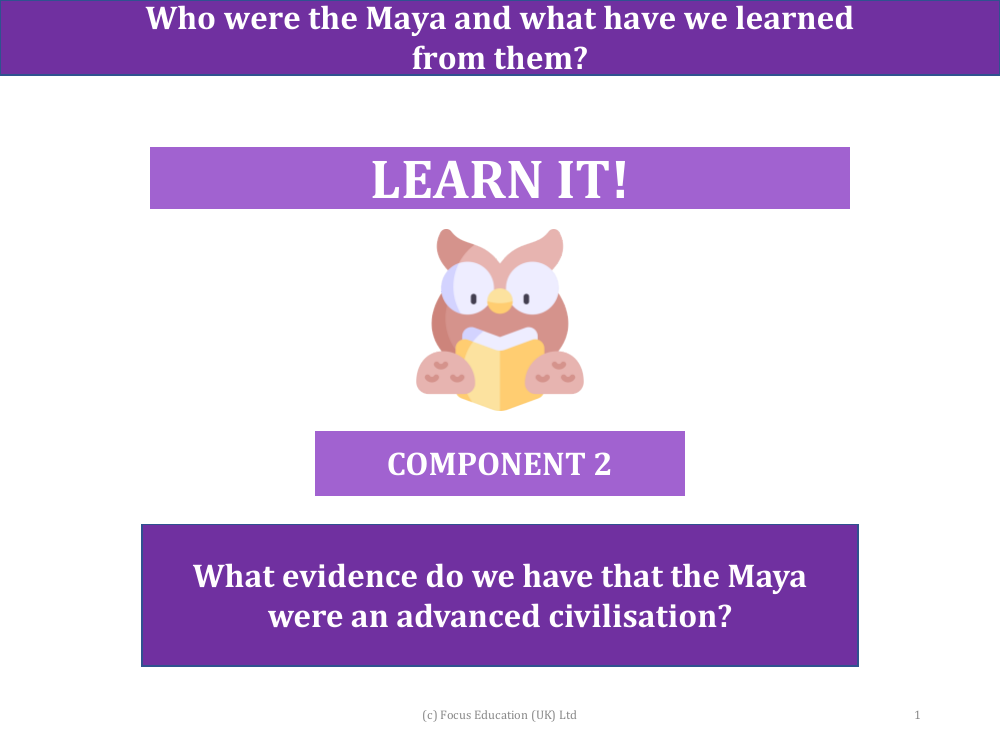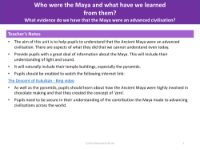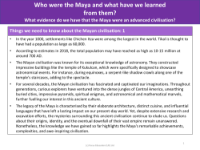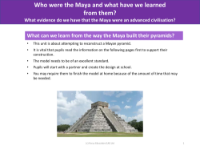What evidence do we have that the Mayans were and advanced civilisation? - Presentation

History Resource Description
The Maya civilisation, which thrived in Central America, has long been recognised as advanced due to its remarkable achievements in various fields. Architecturally, they constructed monumental pyramids and temples, such as the temple of Kukulcan, designed to align with celestial events. During equinoxes, these structures would display astonishing phenomena, like the appearance of a serpent-like shadow descending the temple's steps, demonstrating their sophisticated knowledge of astronomy. The Maya also boasted large urban settlements, with cities like Tikal housing populations in the tens of thousands. Their societal advancements were further evidenced by their innovative use of cacao seeds to create a sacred beverage used in religious ceremonies and as a form of currency. Additionally, they were responsible for the early development of the mathematical concept of zero, a significant intellectual milestone.
Beyond their scientific and culinary contributions, the Maya civilisation was also known for its artistic flair, as seen in their use of mica to make their sacred temples glisten in the sunlight. Their pyramids, built to reflect their astronomical knowledge, were not only places of worship and ceremony but also served as navigational landmarks towering above the jungle canopy. The Maya's ability to sustain a thriving civilisation in the challenging environment of a rainforest further showcases their ingenuity and adaptability. Their legacy is a testament to an advanced civilisation that continues to captivate scholars and enthusiasts alike, with many aspects of their culture and technology still shrouded in mystery.





